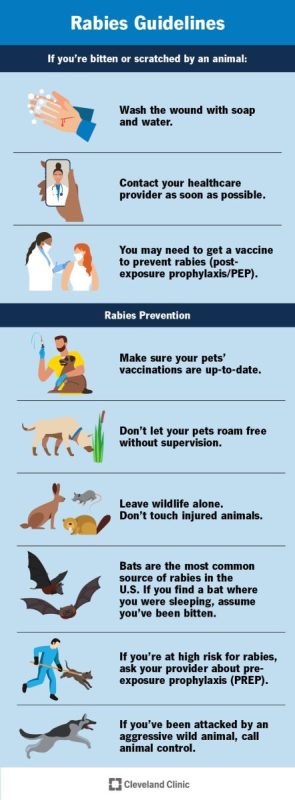
Signs of rabies in a cat after a bite and what to do if the pet has been in contact with an infected animal
It’s not for nothing that the mere thought of feline rabies terrifies pet owners around the world. Rabies in cats is highly contagious, and when signs of the disease appear, the disease is almost always fatal.
While rabies is a real threat to your pet’s life, you can minimize the risk of this deadly disease. To do this, you need to vaccinate the cat and not let it out of the house. Here are seven common rabies questions that will help you keep your cat safer in this article.
Contents
1. What is rabies
Rabies is a completely preventable disease caused by a virus that infects the brain and spinal cord of mammals. Cases of rabies have been registered in almost all regions of the Russian Federation, the most unfavorable situation has developed in Moscow and adjacent regions, where from 20 to 140 cases of rabies are recorded annually, according to the FBUZ Center for Hygienic Education of the Population of Rospotrebnadzor. Around 59 people die of rabies each year worldwide, according to the Centers for Disease Control.
The carriers of rabies are mainly cats and dogs, as well as wild animals such as foxes, wolves, raccoon dogs and various rodents, but the disease can occur in any mammal. Cases of rabies are more often reported in areas where there are a large number of unvaccinated stray cats or dogs. According to the Mos.ru portal, in the Russian Federation, it is cats who get rabies more often than other domestic animals.
2. How rabies is transmitted
The disease is most often transmitted through the bite of a rabid cat or any mammal infected with the virus. The saliva of infected mammals is contagious. It can be transmitted by contact of the saliva of an infected animal with an open wound or mucous membranes such as the gums.
3. Signs of rabies in cats
Rabies in cats is usually divided into three stages. The first stage is called prodromal. At this stage, a cat infected with rabies usually begins to show changes in behavior that are atypical for its character: a shy one can become sociable, a sociable one can become shy, etc.
The second stage is called the stage of excitement – the most dangerous phase of rabies. At this stage, the sick cat may become nervous and vicious. She may show signs such as loud meowing, seizures, and loss of appetite. At this point, the virus attacks the nervous system and prevents the cat from swallowing. The result is classic signs of excessive salivation or foaming at the mouth.
The third stage is paralytic. At this stage, the cat falls into a coma, cannot breathe and, unfortunately, this stage ends with the death of the animal. This stage usually occurs about seven days after the onset of symptoms, with death around the 10th day.
4. Incubation period for rabies in cats
After being infected with rabies, symptoms do not appear immediately in a cat. The actual incubation period is three to eight weeks, but in some cases, the time it takes for symptoms to appear can be anywhere from 10 days to a year.
The rate at which symptoms appear depends on the site of the bite. The closer the bite site is to the brain and spinal cord, the faster the symptoms develop. The presence of the virus in the saliva of an infected animal at the time of the bite (it is not always present), as well as the severity of the bite, also affect.
5. How is rabies diagnosed?
Rabies can only be diagnosed by examining the brain tissue of a deceased mammal. If rabies is suspected in a deceased or euthanized animal, the veterinarian removes the brain and performs a direct test for rabies antibodies.
6. How to prevent rabies
Rabies in cats can be easily prevented with routine vaccinations and keeping the animal indoors. In most regions, vaccination is mandatory.
After the first vaccination, the cat will receive the vaccine again a year later, and thereafter must be vaccinated once a year. The owner will be given a special certificate of vaccination or put the appropriate marks in the pet’s veterinary passport – they must be kept. You will need them to register your pet and when visiting a veterinarian.
7. What to do if the cat is infected with rabies
If a wild animal or cat is infected with rabies, they should not be approached for their own safety. It is urgent to call your local animal control department for advice. Most likely, specialists from the animal control department will come to collect the pet and advise on what to do next.
While keeping your cat indoors is the easiest way to protect your cat, some cats need a change of scenery from time to time. If the house has a backyard, it is recommended to make a protected enclosure so that the cat can safely walk in it. If you have to walk a cat on the street, it is better to do it on a leash or harness.
Rabies in cats is an incurable disease, but it is up to the owner to make sure that it does not affect their beloved pet.





